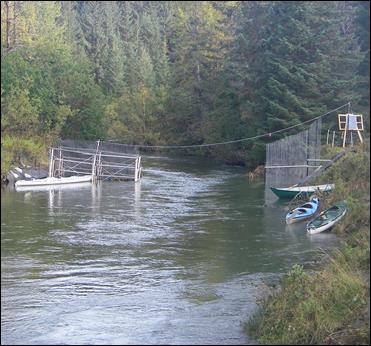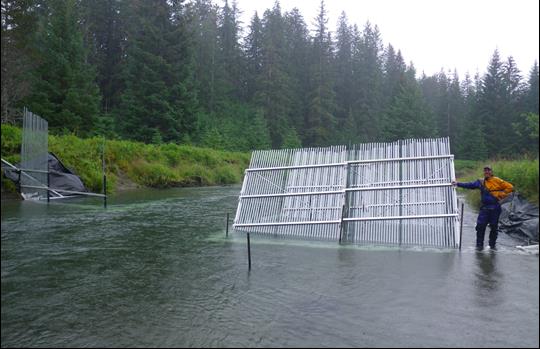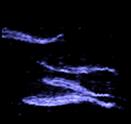How is sonar used to count spawning salmon? How many salmon return to the Bartlett River?
Project Dates
May 1, 2011 - December 31, 2015
Did You Know?
Around the end of the 19th century, sockeye salmon ran up the Bartlett River in much higher numbers than today, and a robust but short-lived commercial fishery became established in Bartlett Cove. Whether over-fishing, natural habitat changes, or other factors explain the later decline in sockeye runs is a matter for speculation.
Introduction

Many visitors as well as local anglers enjoy salmon fishing on Glacier Bay National Park and Preserve’s Bartlett River, which provides relatively easy foot access in a beautiful wilderness setting. Sport fishing effort has increased dramatically in recent years, but the sustainability of the current harvest is unknown. This project will provide quantitative estimates of escapement (the number of fish that escape harvest and reach spawning grounds), which are paramount for evaluating future fishery sustainability.
The information will also provide a baseline against which future changes in fish abundance can be compared. Even as human harvest increases, global climate change and high geologic uplift rates in this area are anticipated to negatively affect both the quality and quantity of salmon habitat over the long term. Salmon abundance is thus anticipated to decline in the future as a consequence of natural and anthropogenic changes.
Understanding fish abundance and year-to-year variation provides context against which harvest can be compared to evaluate sustainability. Quantitative information would be critical for persuading the Alaska Board of Fisheries to consider management actions such as a reduction in the catch limit, currently set at six fish per person/day.
Methods

A Dual frequency Identification Sonar (DIDSON) for enumerating escapement of salmonids (primarily coho salmon) is installed seasonally for four years (2011-2014) on the Bartlett River well upstream of most fishing effort. The DIDSON produces near-video quality imagery of migrating salmon and provides the ideal solution for counting fish in a river system where visibility is often obscured by turbid water quality conditions. Researchers view samples of the video and manually count individual fish moving past the sonar beam.
Two diversion fences are installed to direct fish past the field of view of the DIDSON. Aluminum bipod supports hold the wings upright. These are installed in late July/early August and removed at the end of each counting season in late October or early November. Angler (creel) surveys are conducted from July-October in 2012-2014 to estimate sockeye and coho harvest.
In 2012 the researchers captured, fin-clipped, and released 42 coho salmon. Fin clips were preserved in ethanol and sent to the Alaska Department of Fish and Game Gene Conservation Lab for genetic analysis to determine relatedness to other regional salmon populations. Fin clips of coho and sockeye salmon were collected In 2013.
Findings

The summer of 2012 was exceptionally cold and wet; few fish arrived, and fishing effort was low. The sonar was operational between August 24th and October 29th and was accessed every 2-3 days. The data are still being analyzed. 2013 observers reported a very high abundance of pink salmon.
Of interest: the high-resolution sonar imagery detected a harbor seal moving upstream past the sonar site in pursuit of its prey on two occasions in the fall of 2012—perhaps the same individual.
Learn More
The Alaska Department of Fish and Game website has lots of information about fish: http://www.adfg.alaska.gov/index.cfm?adfg=animals.listfish
Last updated: September 15, 2016
